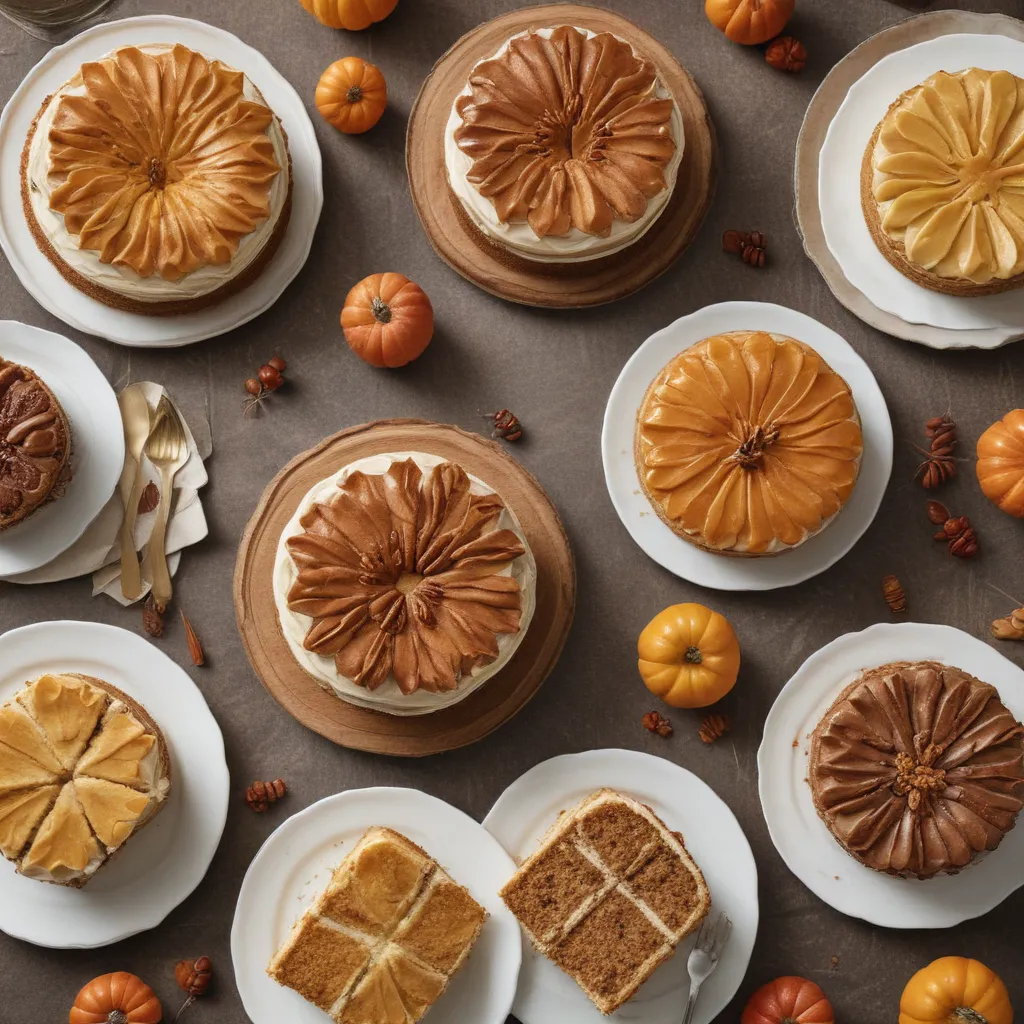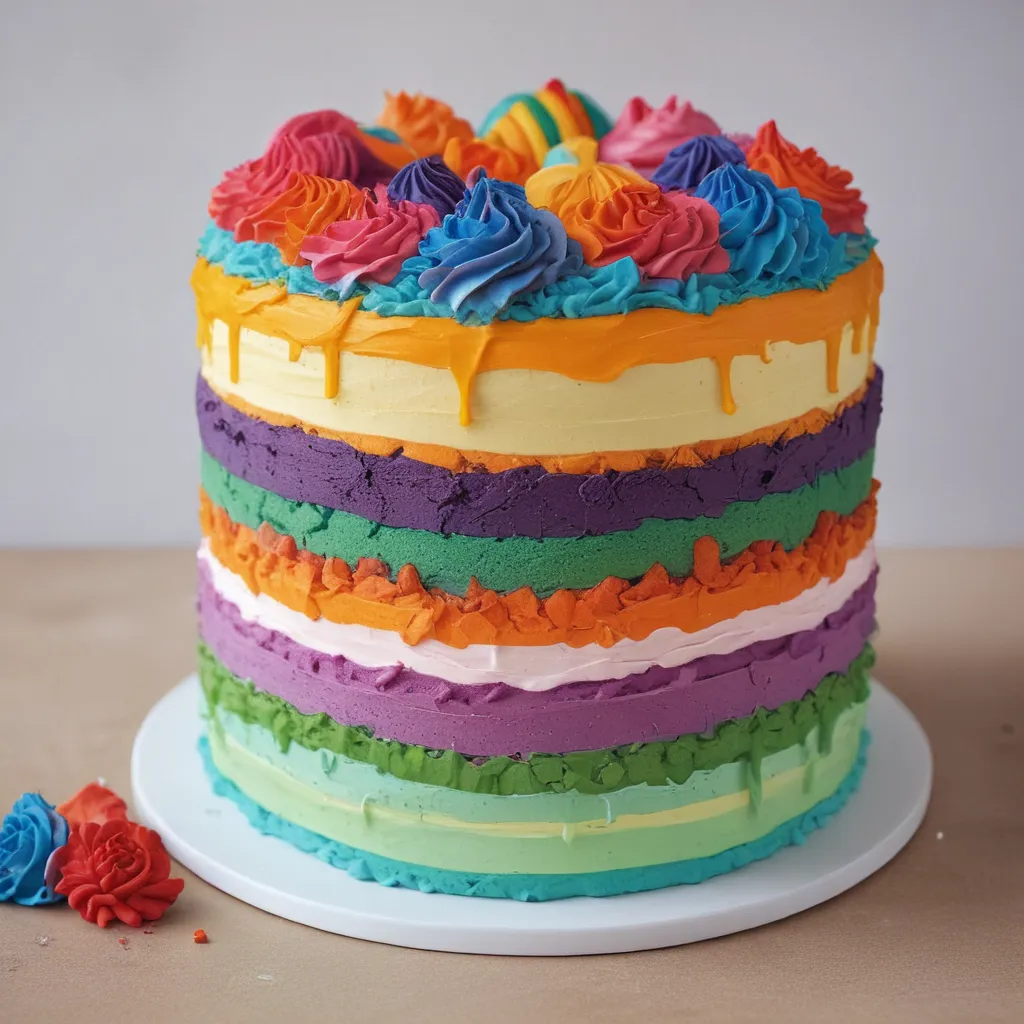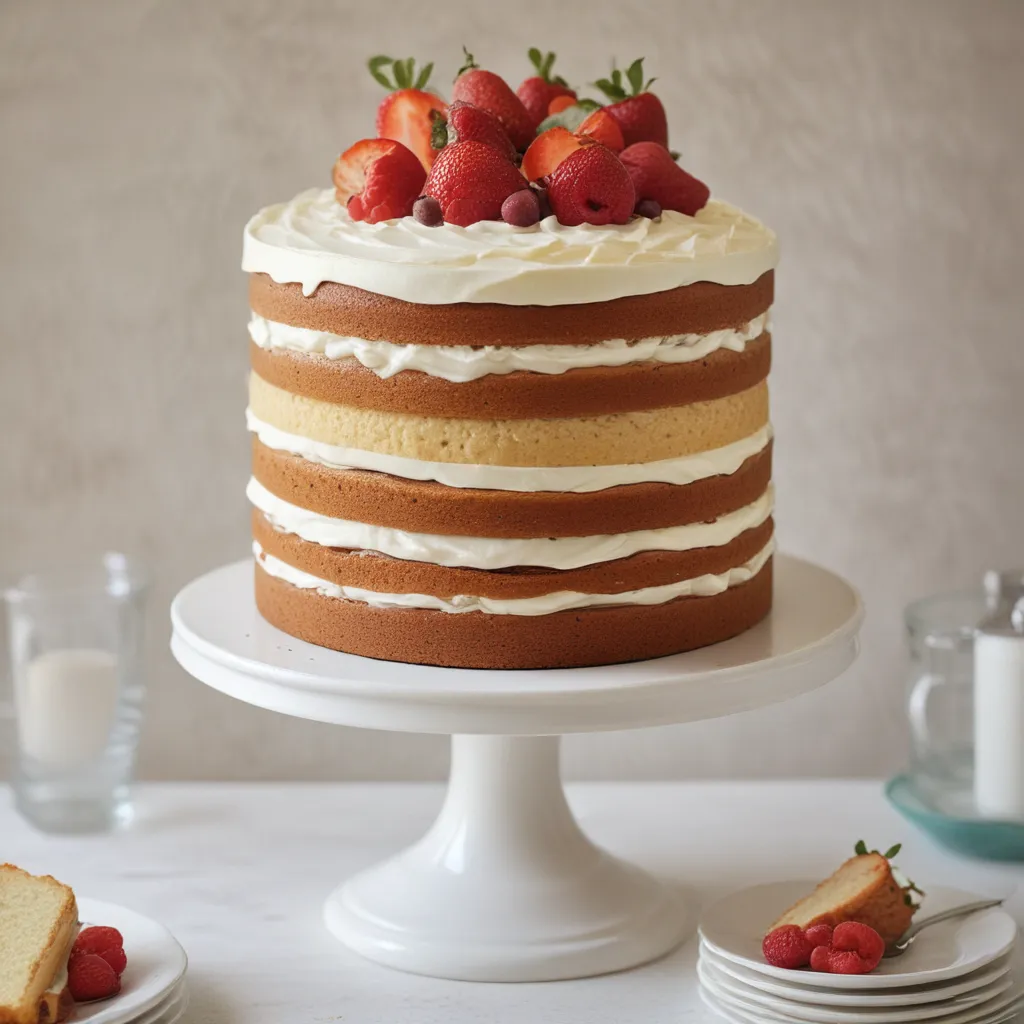Ah, the humble cake – a delectable treat that has captivated our taste buds for centuries. But have you ever wondered what actually goes on behind the scenes when you whip up a batch of fluffy, moist goodness? Well, my friend, prepare to be enlightened, for I am about to take you on a journey through the fascinating world of cake baking chemistry.
The Dance of Ingredients: Understanding the Roles
As I pull on my metaphorical lab coat and safety goggles, I can’t help but feel a sense of excitement. Baking, you see, is not just about throwing a bunch of ingredients together and hoping for the best. No, it’s a delicate balance of science, art, and a little bit of magic.
Let’s start with the star of the show – the flour. This humble powder is the foundation of any cake, and its role is far more complex than you might think. The type of flour you use can dramatically impact the texture, structure, and overall performance of your baked creation. All-purpose flour, for instance, is a versatile choice that can handle a wide range of recipes, while bread flour is better suited for chewy, crusty loaves. And don’t even get me started on the intricacies of whole wheat or gluten-free flours – those are a whole other rabbit hole we could dive down.
But flour is just the beginning. What about the other key players, such as sugar, eggs, and butter? Each of these ingredients has a specific job to do, and understanding their individual contributions is crucial to becoming a cake-baking master.
Sugar, for example, is not just a sweetener – it also helps to tenderize the crumb, caramelize the crust, and even act as a leavening agent. Eggs, on the other hand, are the unsung heroes of the cake world. They provide structure, contribute to moisture, and even help to emulsify the batter. And let’s not forget about butter, the rich and indulgent fat that gives cakes their coveted tender and flaky texture.
As I contemplate the intricate dance of these ingredients, I can’t help but feel a sense of appreciation for the science behind baking. It’s a delicate balance of chemical reactions and physical transformations, all coming together to create something truly special.
The Magic of Leavening: Exploring Baking Soda and Baking Powder
Now, let’s talk about the real showstoppers – the leavening agents that transform our humble batter into fluffy, airy cakes. Baking soda and baking powder may seem like simple, unassuming ingredients, but their role in baking is nothing short of remarkable.
Baking soda, or sodium bicarbonate, is a chemical compound that reacts with acidic ingredients in the batter, like buttermilk or chocolate, to produce carbon dioxide bubbles. These bubbles are what give cakes their signature rise and light texture. But the magic doesn’t stop there – baking soda also helps to tenderize the gluten strands in the flour, resulting in a more tender and delicate crumb.
Baking powder, on the other hand, is a bit more complex. It’s a combination of baking soda, an acidic ingredient, and a neutral filler, like cornstarch. When the batter is mixed and heated, the acidic component in the baking powder reacts with the baking soda, producing those all-important carbon dioxide bubbles. This means that baking powder can provide leavening even in the absence of other acidic ingredients, making it a versatile choice for a wide range of cake recipes.
As I contemplate the intricate dance of these leavening agents, I can’t help but be amazed by the sheer complexity of what’s happening on a microscopic level. It’s a symphony of chemical reactions, all orchestrated to transform a simple batter into a towering, fluffy masterpiece.
The Alchemy of Mixing: How to Achieve the Perfect Batter
Now that we’ve explored the key ingredients and leavening agents, it’s time to dive into the art of mixing. Because, let me tell you, there’s a whole lot more to it than just tossing everything into a bowl and giving it a good stir.
The order in which you add your ingredients, the speed at which you mix, and even the temperature of your kitchen can all have a profound impact on the final texture and structure of your cake. It’s a delicate balancing act, and one that takes a bit of practice to master.
Take the humble creaming method, for example. This technique, which involves beating together butter and sugar until light and fluffy, is crucial for creating cakes with a tender, fine crumb. The air bubbles that are incorporated during this process act as miniature balloons, helping to lift the batter as it bakes. But if you overbeat the mixture, you risk destabilizing those precious air pockets, leading to a dense, heavy cake.
And then there’s the matter of gluten development. Gluten, the protein found in wheat flour, is responsible for providing structure and chewiness in baked goods. But too much gluten development can result in a tough, rubbery texture – hardly the light, airy cake we’re aiming for. That’s why it’s so important to be gentle when mixing the batter, using a light hand to avoid overworking the gluten.
As I ponder the alchemy of mixing, I can’t help but draw a parallel to the art of perfecting a cocktail. It’s all about finding the perfect balance of flavors and textures, with each ingredient playing a crucial role in the overall harmony of the final product. And just like a skilled bartender, a seasoned baker knows exactly how to coax the best out of their ingredients, creating something truly transcendent.
The Science of Baking: Exploring Temperature and Time
With the ingredients prepped and the batter perfectly mixed, it’s time to turn our attention to the final frontier of cake baking: the oven.
Now, you might think that all you have to do is pop that cake pan in the oven and let the heat work its magic. But, oh, my friends, there’s so much more to it than that. The temperature and baking time can make or break your creation, and understanding the underlying science is key to achieving baking perfection.
Let’s start with temperature. The oven’s heat is responsible for a multitude of chemical and physical transformations happening within the cake batter. At lower temperatures, the leavening agents spring into action, producing those all-important carbon dioxide bubbles that give cakes their rise. As the temperature increases, the proteins in the eggs and flour begin to set, providing structure and stability to the batter.
But it’s not just the initial temperature that matters – the way the temperature changes over the course of baking is equally crucial. A gradual increase in temperature allows the cake to rise slowly and evenly, resulting in a tender, well-structured crumb. Too much heat too quickly, and you risk a tough, uneven interior with a burnt exterior.
And then there’s the matter of baking time. Underbake a cake, and you’ll end up with a gooey, uncooked center. Overbake it, and you’re left with a dry, crumbly mess. It’s a delicate balance, and one that requires a keen eye and a trusty timer.
As I contemplate the intricate dance of temperature and time, I can’t help but be reminded of the culinary exploits of my dear friend, Chef Jax. You see, Jax is the mastermind behind a local custom cake shop, and their attention to detail when it comes to baking is truly unparalleled. They understand that every oven is different, every ingredient can behave a bit differently, and that the only way to achieve consistent, show-stopping results is to pay close attention to the science behind it all.
The Art of Decoration: Bringing Cakes to Life
But the cake-baking journey doesn’t end once the batter has been baked to perfection. Oh, no, my friends – the real magic happens when it’s time to decorate.
Now, I know what you’re thinking: “Decorating is just the fun, pretty part, right? How much science could there possibly be to it?” Well, let me tell you, the art of cake decoration is a delicate balance of creativity and chemistry.
Take, for example, the humble buttercream frosting. This creamy, dreamy topping is the foundation for so many of our favorite cake designs, from the classic swirl to the intricate rosette. But have you ever wondered what gives buttercream its signature smooth and spreadable texture? It’s all about the emulsion – a carefully orchestrated dance between the fat (in this case, butter) and the water (in the form of milk or cream).
And then there’s the matter of fondant, that smooth, pliable covering that transforms cakes into works of art. Fondant is a sugar-based paste that, when applied correctly, can create a seamless, professional-looking finish. But achieving that perfect drape and shine requires an understanding of things like humidity, temperature, and the delicate balance of ingredients.
And let’s not forget about the countless other decorative elements that can be used to bring a cake to life – from intricate piped designs to delicate sugar flowers. Each of these requires its own unique set of techniques and a deep understanding of the underlying principles of food science.
As I admire the stunning custom cakes on display at Jax Cake Shop, I can’t help but marvel at the level of skill and expertise that goes into their creation. These aren’t just beautiful confections – they’re edible works of art, the result of a perfect marriage between science and creativity.
Conclusion: Embracing the Science of Cakes
As I step back and reflect on our journey through the science of cakes, I can’t help but feel a renewed sense of wonder and appreciation for this beloved treat. What may have once seemed like a simple indulgence is, in reality, a testament to the incredible power of chemistry, physics, and the human ingenuity that lies at the heart of baking.
From the delicate balance of ingredients to the precise temperature and timing required for baking perfection, every aspect of cake-making is a study in the magic of science. And when you combine that technical mastery with the boundless creativity of cake decorators, the results are nothing short of breathtaking.
So, the next time you take a bite of a fluffy, moist cake, I encourage you to pause and appreciate the incredible journey that led to that moment. Think about the chemists and bakers who have spent countless hours perfecting their craft, unlocking the secrets of leavening and the science of emulsions. And if you’re feeling inspired, perhaps you’ll even don an apron and try your hand at some baking experimentation of your own.
After all, the world of cakes is a veritable playground of scientific exploration, where the only limit is your imagination. So, let’s raise a fork to the humble cake, and to the endless wonders of baking chemistry – the delicious foundation upon which all great confections are built.





